Rest Your Way to Massive Muscle Growth
December 18, 2017
Counting drop sets, reps schemes, and plates on the bar are familiar to most. But rest periods? No so much. Rest periods sit at the back of your mind.
Rest periods are an important, but sadly, neglected factor in your muscle growth.
Big mistake.
By neglecting rest period, you’re handicapping your iron efforts. Luckily, there are guidelines to keep you in line to get your rest periods on track and have you training optimally.
The amount of time and the activities you perform have huge implications on the adaptations your body makes. The amount of time between sets will determine:
- Restoration of short-term energy substrates like creatine
- Central nervous system recovery for maximal power output
- Clearing metabolites from muscular contractions
- Variations in heart rate
Recovery is essential for certain training goals, while you could keep the heart rate high at other times for maximal fat burning.
The Amount of Rest Depends on Your Goal
Like anything else, your training needs to be goal-specific. You won’t run 73 miles per day and be as big as Paul Bunyan. Conversely, if you rest 10 minutes between sets to eat gym-provided stuffed crust pizza, you won’t see lean gains.
Your training must be specific to your goals to achieve the desired outcomes, and rest periods are a vital cog in training. It’s time to get them on track for your goals. Here’s how.
Use Rest Periods for Strength Development
Having enough strength is necessary to maximize muscular hypertrophy.
Look at the all-time greats: Arnold, Columbo, and Ronnie Coleman were all heaving serious iron. Top-end strength allows you to use greater loads for greater volume, which, in-turn, creates greater overload for the body. When training maximal strength, the rest intervals need to be long enough for the nervous system to recover for subsequent heavy bouts of lifting.
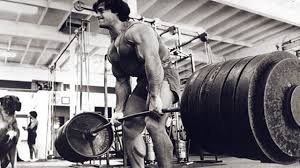 Throughout workouts, you’ll notice that weights begin to feel lighter. This is due to the effects of “potentiation,” as the body becomes stronger once you feel the weight out. This is a major benefit of ascending sets in most programs. The previous work sets “potentiate” the body for subsequent sets. One must be careful, though. If rest periods are too short neural and muscular fatigue will counter this potentiation and you’ll miss lifts. In most cases, rest periods should be three to five minutes in-between heavy strength sets for maximum performance.
Throughout workouts, you’ll notice that weights begin to feel lighter. This is due to the effects of “potentiation,” as the body becomes stronger once you feel the weight out. This is a major benefit of ascending sets in most programs. The previous work sets “potentiate” the body for subsequent sets. One must be careful, though. If rest periods are too short neural and muscular fatigue will counter this potentiation and you’ll miss lifts. In most cases, rest periods should be three to five minutes in-between heavy strength sets for maximum performance.
Use Non-Competing Strength Sets
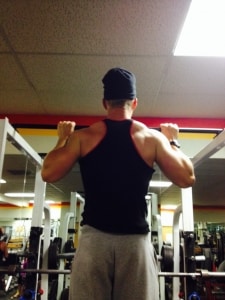 While I mentioned three to five minutes between sets for strength exercises less time can be used when opposing muscle groups are trained. Here’s an example with a military press and chin-up:
While I mentioned three to five minutes between sets for strength exercises less time can be used when opposing muscle groups are trained. Here’s an example with a military press and chin-up:
1a. Chin Up 4×6 Rest 90 seconds
1b. Military Press 4×6 Rest 90 seconds
With shorter rests in-between each set, you perform more work in less time and achieve balanced training. You’ll activate antagonist muscles and improve exercise performance, with ample time still given for individual muscle groups to recover.
Use Rest Periods For Muscle Growth
I’m a huge proponent of emphasizing strength for muscle growth. But that doesn’t mean longer rest periods are ALWAYS the answer. Metabolic stress plays a high role in exercise-related muscular hypertrophy, such as dense resistance training with short rest periods. According to Brad Schoenfeld:
“The accumulation of metabolites is a result of short rest and exercises that require the use of anaerobic glycolysis, resulting in the buildup of lactate, hydrogen ions, create, and other metabolites. It’s hypothesized that this mechanism leads to greater muscle fiber damage.”
Training for muscle growth requires a well-rounded approach that emphasizes:
- heavy weights/low reps (1-6)
- moderate weight with moderate reps (8-12): and;
- the occasional higher rep sets (15+).
Varied rest periods must be used with 3-5 minutes and 45-90 seconds and 0-30 seconds working best, respectively.
Dropping your rest periods even 5 seconds per week will maximize training density and provide the benefits of high-intensity interval training (HIIT).
Rest Period Considerations
Hormones are affected by your rest periods. Longer rest periods are vital for nervous system recover. Shorter periods (30-45 seconds) create a greater release of growth hormone, aiding in burning fat and building muscle.
While these changes aren’t monumental, they will surely help your training more than hurt it.
Rest periods should match the nervous system and mechanical requirements of the exercise. Multi-joint free weight exercises like cleans and squats have a much greater nervous system and mechanical requirements than a triceps extension or biceps curl. So should the rest be the same?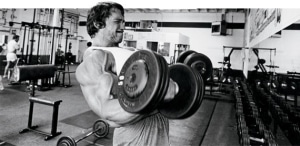
No!
Look at the muscles involved in a clean versus a biceps curl: quads, glutes, hamstrings calves, traps, rectus erector < versus the biceps and brachadorialis. The clean requires much larger muscles and much larger neural requirements to execute the exercise.
Major multi-joint exercises recruit more muscles and have greater neural requirements than isolation and single joint exercises. The rest periods must match these requirements for full recovery and optimal performance.
Wrap Up
Rest periods are the redheaded stepchild of exercise programming – forgotten and dearly neglected. This is a mistake. Rest periods are an important variable for your muscle building desires.
Take enough time to maximize your strength development. Then reduce rests to reap the benefits of metabolic stress for further muscle gains. When results become stagnant, look where few look in their programming: rest periods.
And if you want to take your results to the next level, and see training plateaus crumble beneath you, grab your copy of The Physique Hacking Cheat Sheet
>>> Grab The Physique Hacking Cheat Sheet Here <<<
Citations:
Baechle, Thomas, and Roger Earle. Essentials of Strength and Conditioning. 3rd. Champaign, Il: Human Kinetics , 2008. 390-391. Print.
Schoenfeld, Brad. “The Mechanisms of Hypertrophy and Their Application to Resistance Training.” Journal of Strength and Conditioning Research. 24.10 (2010): 2857. Web. 21 Nov. 2013.
Rixon KP, Lamont HS, Bemben M. Influence of type of muscle contraction, gender, and lifting experience on postactivation potentiation performance. J Strength Cond Res. 2007; 21: 500–505.
Robbins, D.W. Postactivation potentiation and its practical applicability: a brief review. J Strength Cond Res. 2005, 19(2): 453-458.
Wilson JM, Duncan NM, Marin PJ, Brown LE, Loenneke JP, Wilson SM, Jo E, Lowery RP, Ugrinowitsch C. Meta-analysis of postactivation potentiation and power: effects of conditioning activity, volume, gender, rest periods, and training status. J Strength Cond Res. 2013 Mar;27(3):854-9. doi: 10.1519/JSC.0b013e31825c2bdb.


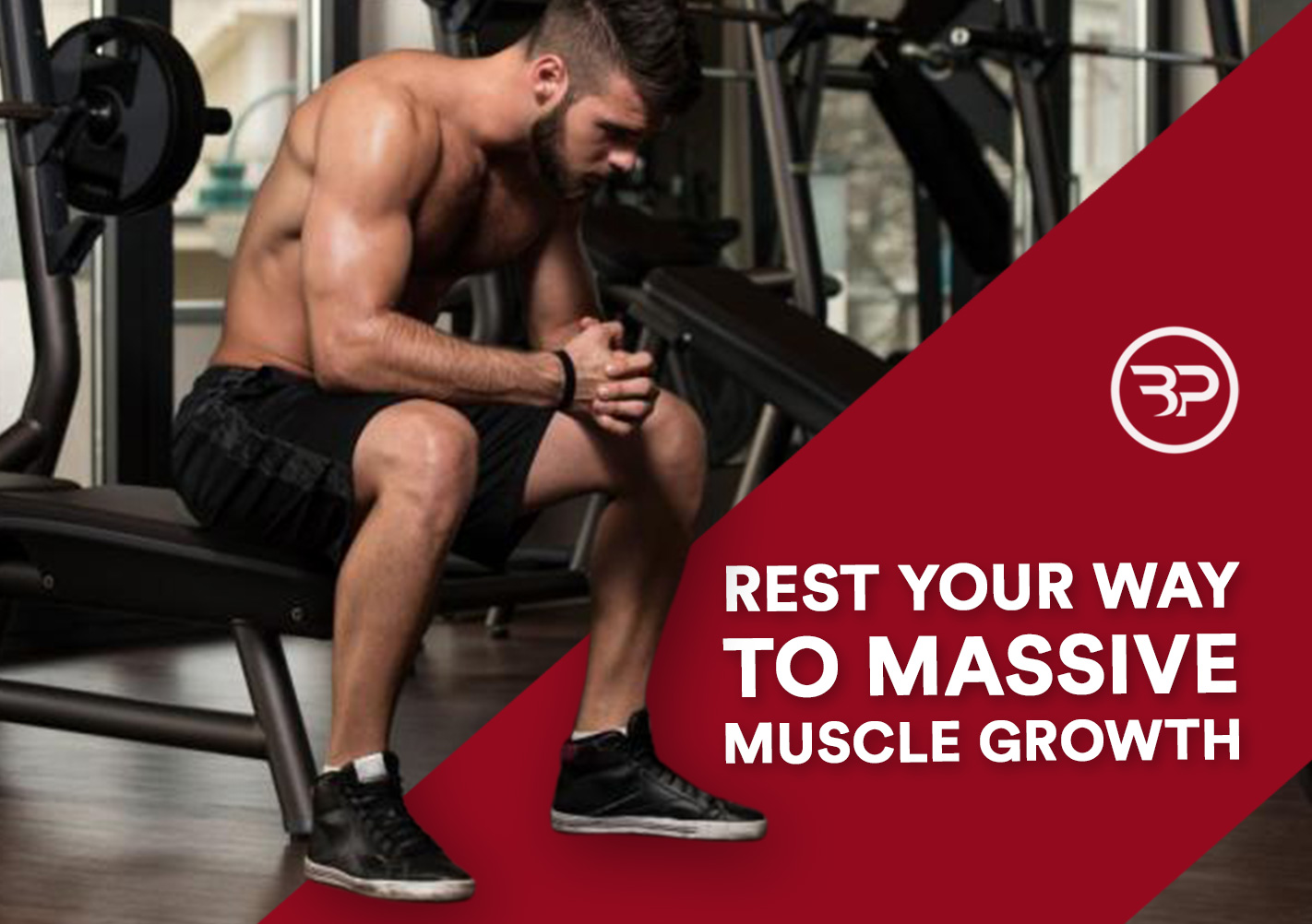
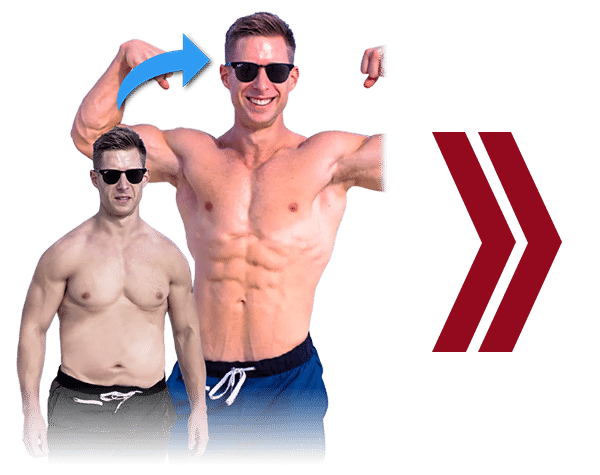





[…] post Rest Your Way to Massive Muscle Growth appeared first on Bach […]
I made this mistake of thinking I had to keep my heart rate up continuously when doing weights.
when I learned how important strength and muscle is an how rest helps that, it was a game changer.
Great post Eric